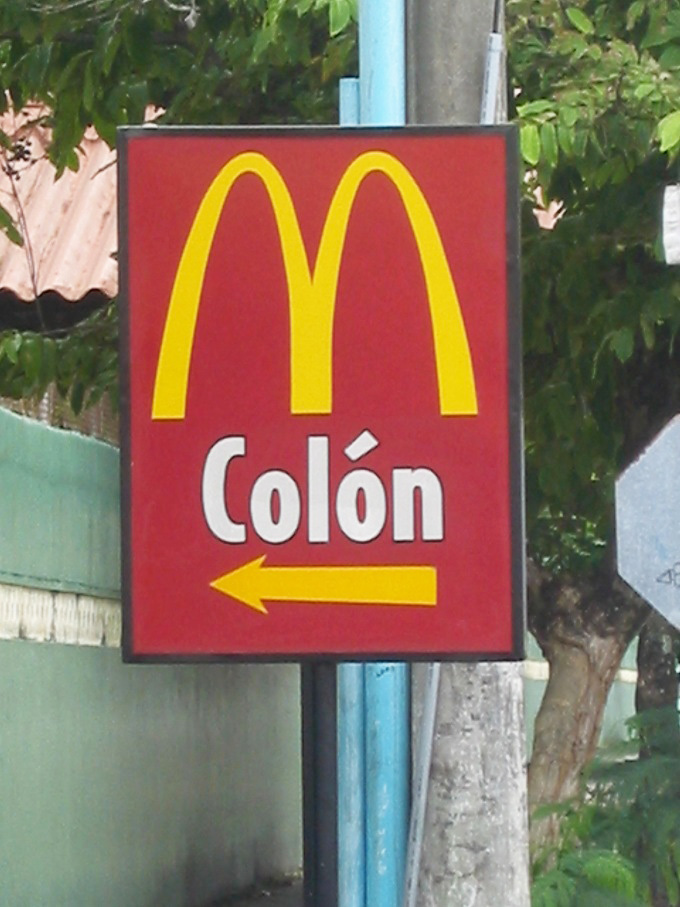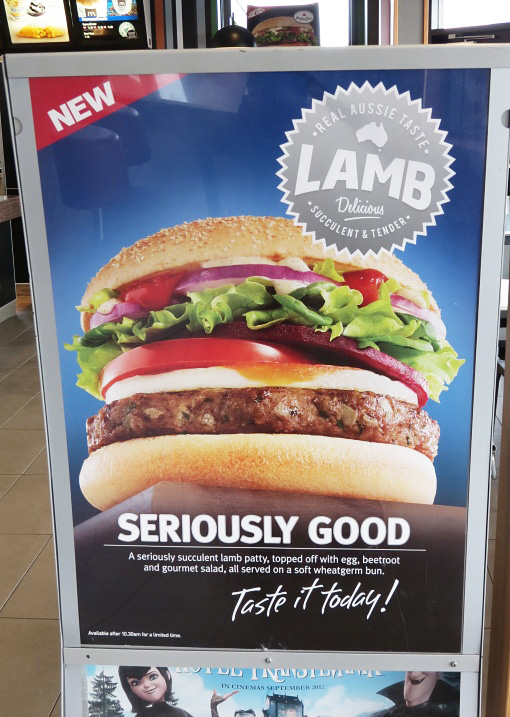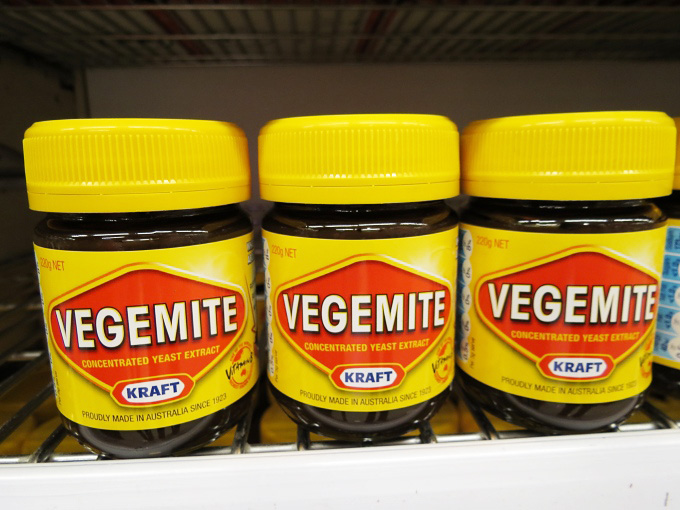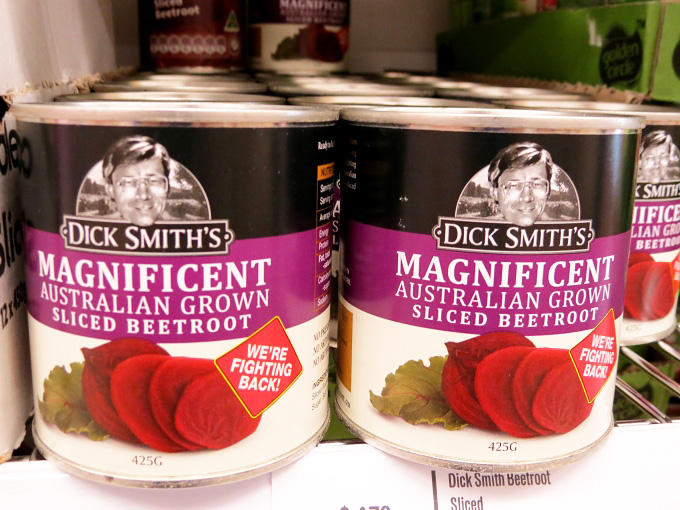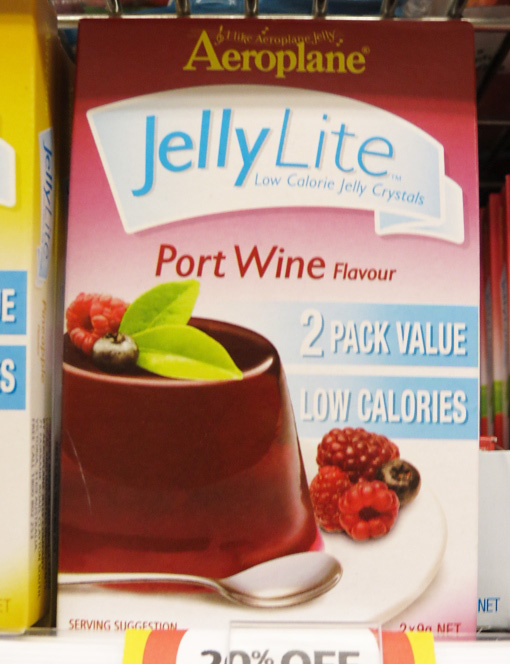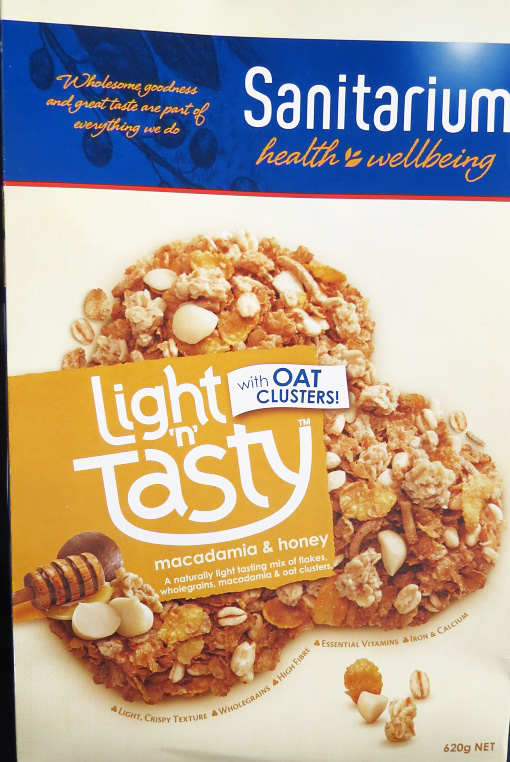Chocolate John...right in my own backyard
/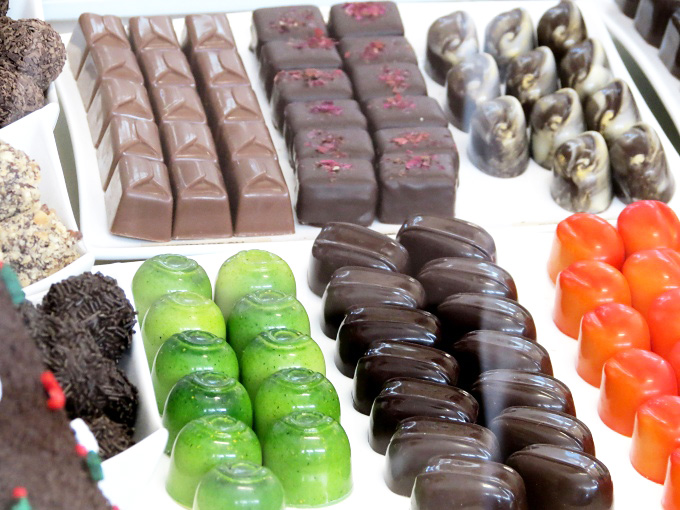 Reg came over for dinner the other night and brought a tiny little box with four handmade chocolates in it. “Nutpatch... just up the road”, he said, when I asked where they came from. We went to dinner at Marcia and John's house one night and they served nougat (pronounced like the French without the “t”...new-gah) after dinner. Absolutely, melt-in-your-mouth delicious. “Where is it from?” I inquired. “Just up the road from you...Nutpatch.” It was obvious that I needed to check this out.
Reg came over for dinner the other night and brought a tiny little box with four handmade chocolates in it. “Nutpatch... just up the road”, he said, when I asked where they came from. We went to dinner at Marcia and John's house one night and they served nougat (pronounced like the French without the “t”...new-gah) after dinner. Absolutely, melt-in-your-mouth delicious. “Where is it from?” I inquired. “Just up the road from you...Nutpatch.” It was obvious that I needed to check this out.
 I'd walked to the post office innumerable times and walked right past this unpretentious little shop called Nutpatch. It's right on the Channel Highway, next door to the Coffee a Go Go in an abandoned service station. A handpainted wooden sign sits on a pick-up truck across the street: Handmade fine chocolate. How could I have missed it?
I'd walked to the post office innumerable times and walked right past this unpretentious little shop called Nutpatch. It's right on the Channel Highway, next door to the Coffee a Go Go in an abandoned service station. A handpainted wooden sign sits on a pick-up truck across the street: Handmade fine chocolate. How could I have missed it?
 I walked through the door and I was in another world. I thought I'd died and gone to heaven. The smell...the delicious smell of chocolate enveloped me. I might add, I'm not that much of a chocolate hound. (David more than makes up for what he terms a major character flaw of mine). The array of chocolates was absolutely enticing. It gave new meaning to “eye candy”.
I walked through the door and I was in another world. I thought I'd died and gone to heaven. The smell...the delicious smell of chocolate enveloped me. I might add, I'm not that much of a chocolate hound. (David more than makes up for what he terms a major character flaw of mine). The array of chocolates was absolutely enticing. It gave new meaning to “eye candy”.
 A glass-fronted display showcased pieces of chocolate art ... gorgeous, perfect, exquisitely decorated, individually handmade chocolates that also happened to be edible delights. Shelves of dark, milk and white chocolate crafted into a myriad of shapes and detailed figures lined the walls. From tiny boxes of four custom-selected pieces to chocolate bowls, delicate tree ornaments and huge chocolate Santas, it was all here in this tiny little shop called Nutpatch.
A glass-fronted display showcased pieces of chocolate art ... gorgeous, perfect, exquisitely decorated, individually handmade chocolates that also happened to be edible delights. Shelves of dark, milk and white chocolate crafted into a myriad of shapes and detailed figures lined the walls. From tiny boxes of four custom-selected pieces to chocolate bowls, delicate tree ornaments and huge chocolate Santas, it was all here in this tiny little shop called Nutpatch.
 John Vito, the owner, was only too happy to chat with me about his shop … on three separate occasions. I began calling him Chocolate John. I was intrigued with him and his chocolate shop. He ships worldwide and has been lauded by many gourmets for his fine chocolates and especially his secret recipe nougat and here he is in a tiny little shop in Kettering, Tasmania. He relies on Tasmanian ingredients for his nougat: local honey and eggs plus the key ingredient, hazelnuts from his own orchard. He grows, harvests, shells and roasts over 30 different varieties of this earthy-tasting nut and incorporates them into his award-winning confections.
John Vito, the owner, was only too happy to chat with me about his shop … on three separate occasions. I began calling him Chocolate John. I was intrigued with him and his chocolate shop. He ships worldwide and has been lauded by many gourmets for his fine chocolates and especially his secret recipe nougat and here he is in a tiny little shop in Kettering, Tasmania. He relies on Tasmanian ingredients for his nougat: local honey and eggs plus the key ingredient, hazelnuts from his own orchard. He grows, harvests, shells and roasts over 30 different varieties of this earthy-tasting nut and incorporates them into his award-winning confections.
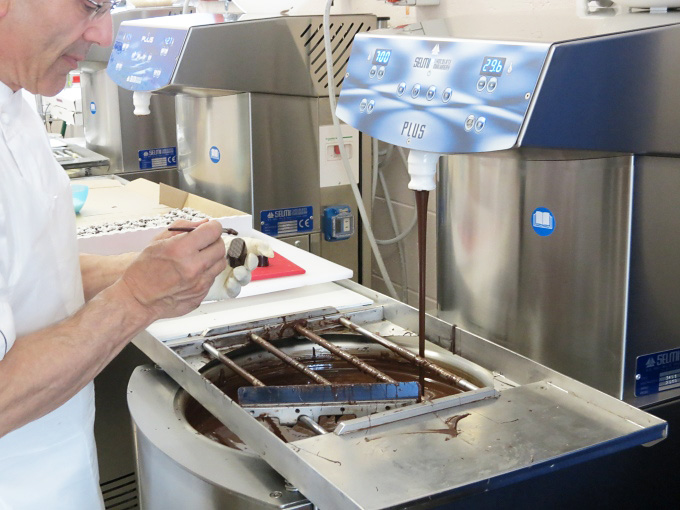 John has had a lifelong love affair with chocolate, but has only been a professional chocolatier for the past 10-15 years. Before that, he was a teacher in nearby Woodbridge for 26 years. As he talked, I watched as liquid chocolate streamed into big stainless steel tubs from his three mixing machines. A steady current of thick, rich chocolate flowed endlessly. He dipped a paintbrush into the liquid chocolate, swished it over a finished chocolate and then dipped it in coconut. He handed me one. Oh, my!
John has had a lifelong love affair with chocolate, but has only been a professional chocolatier for the past 10-15 years. Before that, he was a teacher in nearby Woodbridge for 26 years. As he talked, I watched as liquid chocolate streamed into big stainless steel tubs from his three mixing machines. A steady current of thick, rich chocolate flowed endlessly. He dipped a paintbrush into the liquid chocolate, swished it over a finished chocolate and then dipped it in coconut. He handed me one. Oh, my!
John does not advertise; he never has. He feels his product will sell itself and it does. In fact, when I mentioned his website's page on “where to buy” is blank, he just said “They find me.”
 He doesn't rush his customers. While I was there, two women easily spent 45 minutes in this tiny 12'x12' showroom, carefully choosing their purchases. John chatted easily while he worked. When they were ready, he carefully and precisely placed each purchase into small, brown paper shopping bags. The ladies took another 10 minutes to select individual chocolates from the display case. He made suggestions, but never hinted at rushing.
He doesn't rush his customers. While I was there, two women easily spent 45 minutes in this tiny 12'x12' showroom, carefully choosing their purchases. John chatted easily while he worked. When they were ready, he carefully and precisely placed each purchase into small, brown paper shopping bags. The ladies took another 10 minutes to select individual chocolates from the display case. He made suggestions, but never hinted at rushing.
His goal, he says, is to provide a true chocolate experience for everyone who enters his shop. His background in material design allows him to look at chocolate in a different way. He educates his customers about his material and his craft. He said it's important to respect your material whatever you're creating. Respect the chocolate. Think of what has gone into the process of creating the chocolate he works with...the people involved in harvesting the cacao beans, fermenting them, drying them, roasting them. All of these people are part of the final result.
He told me there was a proper way to eat a chocolate. Bite it in half, savor the taste, look at the half still in your hand to see what workmanship has gone into it: the layers, the ingredients, the colors, the textures. Respect the workmanship, the craft, the art. Chocolate is John's material, his media, and the result is definitely fine art.
Can you understand why I returned so many times? To find someone so committed to his craft, who obviously loves what he does and who is willing to share that passion with others is incredible.
Plus he lets me sample his artwork!


